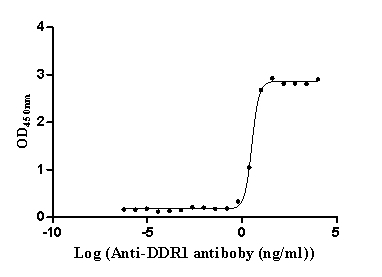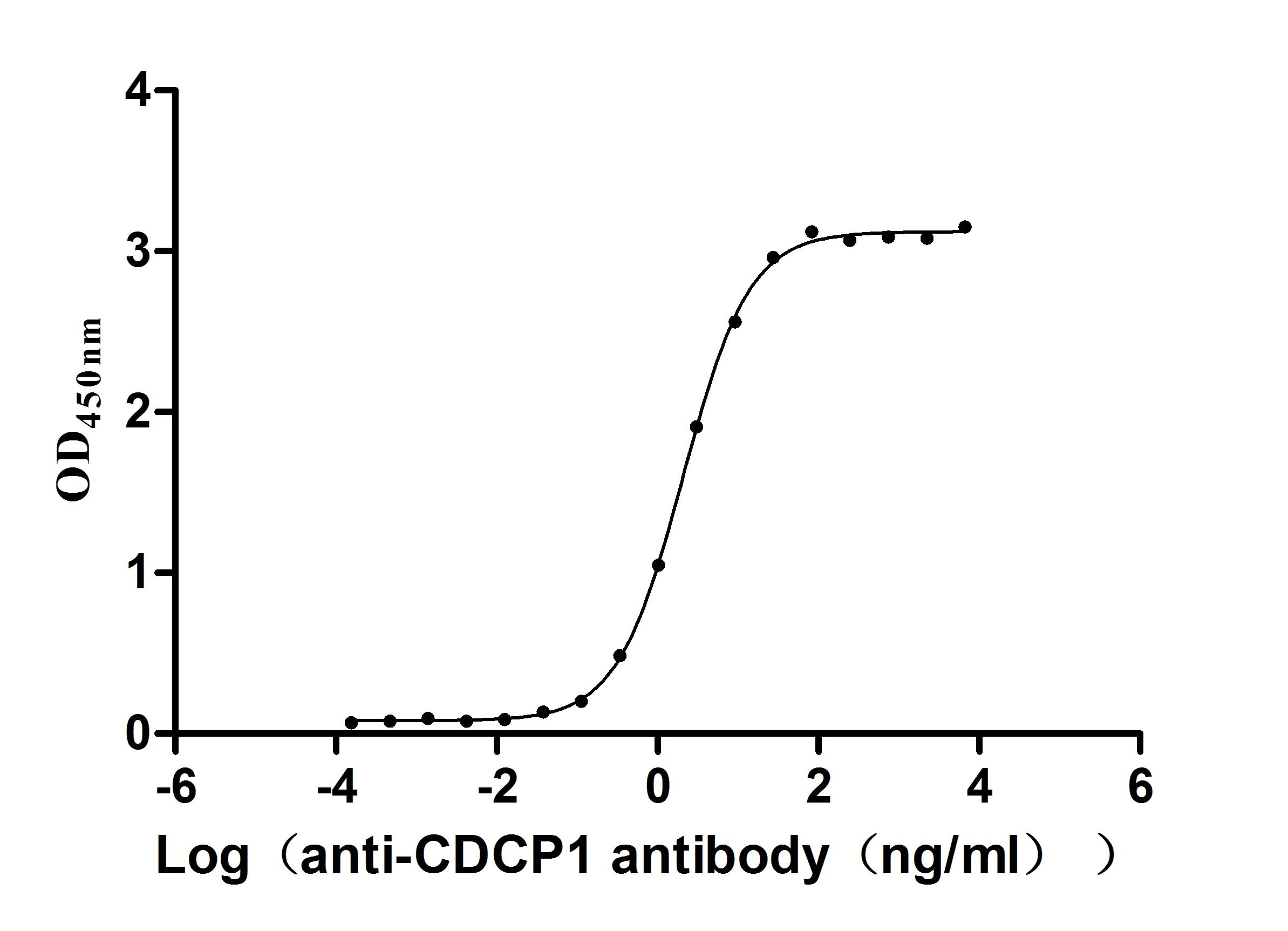Recombinant Rat E3 ubiquitin-protein ligase XIAP (Xiap)
-
中文名稱(chēng):大鼠Xiap重組蛋白
-
貨號(hào):CSB-YP865627RA
-
規(guī)格:
-
來(lái)源:Yeast
-
其他:
-
中文名稱(chēng):大鼠Xiap重組蛋白
-
貨號(hào):CSB-EP865627RA
-
規(guī)格:
-
來(lái)源:E.coli
-
其他:
-
中文名稱(chēng):大鼠Xiap重組蛋白
-
貨號(hào):CSB-EP865627RA-B
-
規(guī)格:
-
來(lái)源:E.coli
-
共軛:Avi-tag Biotinylated
E. coli biotin ligase (BirA) is highly specific in covalently attaching biotin to the 15 amino acid AviTag peptide. This recombinant protein was biotinylated in vivo by AviTag-BirA technology, which method is BriA catalyzes amide linkage between the biotin and the specific lysine of the AviTag.
-
其他:
-
中文名稱(chēng):大鼠Xiap重組蛋白
-
貨號(hào):CSB-BP865627RA
-
規(guī)格:
-
來(lái)源:Baculovirus
-
其他:
-
中文名稱(chēng):大鼠Xiap重組蛋白
-
貨號(hào):CSB-MP865627RA
-
規(guī)格:
-
來(lái)源:Mammalian cell
-
其他:
產(chǎn)品詳情
-
純度:>85% (SDS-PAGE)
-
基因名:Xiap
-
Uniprot No.:
-
別名:Xiap; Api3; Birc4; E3 ubiquitin-protein ligase XIAP; EC 2.3.2.27; Baculoviral IAP repeat-containing protein 4; IAP homolog A; Inhibitor of apoptosis protein 3; IAP-3; rIAP-3; rIAP3; RING-type E3 ubiquitin transferase XIAP; X-linked inhibitor of apoptosis protein; X-linked IAP
-
種屬:Rattus norvegicus (Rat)
-
蛋白長(zhǎng)度:full length protein
-
表達(dá)區(qū)域:1-496
-
氨基酸序列MTFNSFEGSR TVVPADTNKD EEFVEEFNRL KTFANFPSSS PVSASTLARA GFLYTGEGDT VQCFSCHAAV DRWQYGDSAV GRHRRISPNC RFINGFYFEN GATQSTSPGI QNGQYKSENC VGNRNHFALD RPSETHADYL LRTGQVVDIS DTIYPRNPAM CSEEARLKTF QNWPDYAHLS PRELASAGLY YTGIDDQVQC FCCGGKLKNW EPCDRAWSEH RRHFPNCFFV LGRNVNVRSE SGVSSDRNFP NSTNSPRNPA MAEYDARIVT FGTWLYSVNK EQLARAGFYA LGEGDKVKCF HCGGGLTDWK PSEDPWEQHA KWYPGCKYLL DEKGQEYINN IHLTHSLGES VVRTAEKTPS VTKKIDDTIF QNPMVQEAIR MGFNFKDIKK TMEEKLQTSG SNYLSLEVLI ADLVSAQKDN SQDESSQTSL QKDISTEEQL RRLQEEKLCK ICMDRNIAIV FVPCGHLVTC KQCAEAVDKC PMCCTVITFK QKIFMS
-
蛋白標(biāo)簽:Tag?type?will?be?determined?during?the?manufacturing?process.
The tag type will be determined during production process. If you have specified tag type, please tell us and we will develop the specified tag preferentially. -
產(chǎn)品提供形式:Lyophilized powder
Note: We will preferentially ship the format that we have in stock, however, if you have any special requirement for the format, please remark your requirement when placing the order, we will prepare according to your demand. -
復(fù)溶:We recommend that this vial be briefly centrifuged prior to opening to bring the contents to the bottom. Please reconstitute protein in deionized sterile water to a concentration of 0.1-1.0 mg/mL.We recommend to add 5-50% of glycerol (final concentration) and aliquot for long-term storage at -20℃/-80℃. Our default final concentration of glycerol is 50%. Customers could use it as reference.
-
儲(chǔ)存條件:Store at -20°C/-80°C upon receipt, aliquoting is necessary for mutiple use. Avoid repeated freeze-thaw cycles.
-
保質(zhì)期:The shelf life is related to many factors, storage state, buffer ingredients, storage temperature and the stability of the protein itself.
Generally, the shelf life of liquid form is 6 months at -20°C/-80°C. The shelf life of lyophilized form is 12 months at -20°C/-80°C. -
貨期:Delivery time may differ from different purchasing way or location, please kindly consult your local distributors for specific delivery time.Note: All of our proteins are default shipped with normal blue ice packs, if you request to ship with dry ice, please communicate with us in advance and extra fees will be charged.
-
注意事項(xiàng):Repeated freezing and thawing is not recommended. Store working aliquots at 4°C for up to one week.
-
Datasheet :Please contact us to get it.
靶點(diǎn)詳情
-
功能:Multi-functional protein which regulates not only caspases and apoptosis, but also modulates inflammatory signaling and immunity, copper homeostasis, mitogenic kinase signaling, cell proliferation, as well as cell invasion and metastasis. Acts as a direct caspase inhibitor. Directly bind to the active site pocket of CASP3 and CASP7 and obstructs substrate entry. Inactivates CASP9 by keeping it in a monomeric, inactive state. Acts as an E3 ubiquitin-protein ligase regulating NF-kappa-B signaling and the target proteins for its E3 ubiquitin-protein ligase activity include: RIPK1, CASP3, CASP7, CASP8, CASP9, MAP3K2/MEKK2, DIABLO/SMAC, AIFM1, CCS and BIRC5/survivin. Ubiquitinion of CCS leads to enhancement of its chaperone activity toward its physiologic target, SOD1, rather than proteasomal degradation. Ubiquitinion of MAP3K2/MEKK2 and AIFM1 does not lead to proteasomal degradation. Plays a role in copper homeostasis by ubiquitinationg COMMD1 and promoting its proteasomal degradation. Can also function as E3 ubiquitin-protein ligase of the NEDD8 conjugation pathway, targeting effector caspases for neddylation and inactivation. Regulates the BMP signaling pathway and the SMAD and MAP3K7/TAK1 dependent pathways leading to NF-kappa-B and JNK activation. Acts as an important regulator of innate immune signaling via regulation of Nodlike receptors (NLRs). Protects cells from spontaneous formation of the ripoptosome, a large multi-protein complex that has the capability to kill cancer cells in a caspase-dependent and caspase-independent manner. Suppresses ripoptosome formation by ubiquitinating RIPK1 and CASP8. Acts as a positive regulator of Wnt signaling and ubiquitinates TLE1, TLE2, TLE3, TLE4 and AES. Ubiquitination of TLE3 results in inhibition of its interaction with TCF7L2/TCF4 thereby allowing efficient recruitment and binding of the transcriptional coactivator beta-catenin to TCF7L2/TCF4 that is required to initiate a Wnt-specific transcriptional program.
-
基因功能參考文獻(xiàn):
- These results show that XIAP acts as an endogenous neuroprotective and anti-apoptotic agent following SAH. The effects of XIAP on early brain injury was associated with the inhibition of the caspase-dependent apoptosis pathway. PMID: 28327595
- Cognitive impairment and hippocampal neuron apoptosis can cause glucose and lipids metabolic abnormalities, possibly by regulating gastrointestinal motility and AMPK expression in the liver. The changes in the function of XIAP, which is an anti-apoptotic protein in the hippocampus, may affect the metabolism of glucose and lipids. PMID: 26845572
- HSP72 preserves renal function in I/R injury through its antiapoptotic effects, which act by suppressing mitochondrial Smac/Diablo release and preserving XIAP protein content. PMID: 25394481
- The results of this study showed that Endogenous XIAP modulates cerebellar granule neurons survival. PMID: 24955869
- CCN1, often co-expressed with FasL in a stressed heart, sensitizes cardiomyoblasts to FasL-induced apoptosis by activating the mitochondrial pathway to dismantle XIAP. PMID: 24631528
- The overexpression of pro-survival XIAP and IAP-1 in the retinas was not associated with similar changes in the optic nerves of glaucomatous eyes. This may explain the increased vulnerability of optic nerves to elevated intraocular pressure. PMID: 24357921
- increased expression and leakage of Omi/HtrA2 enhanced MI/R injury in aging hearts via degrading XIAP and promoting myocardial apoptosis. PMID: 22535253
- the inhibition of XIAP exacerbated Hypoxia-ischemia-induced persistent behavioral deficits only in females PMID: 22041713
- The activation of ERK increased XIAP expression and led to decreased caspase activation. PMID: 22554503
- Changes in XIAP and Bax mRNA expression may be the mechanism by which PEMF therapy affects postmenopausal osteoarthritis. PMID: 21404022
- Gene therapy with Xiap may protect photoreceptors from retinitis pigmentosa. PMID: 17375200
- Results show that inhibition of XIAP or NAIP activity prevents GDNF-mediated neuroprotective effects, suggesting that XIAP and NAIP are essential for intracellular signalling of GDNF in motor neuron survival (Birc4 protein). PMID: 11813002
- XIAP plays an important role in the regulation of ovarian follicular development (X-linked inhibitor of apoptosis protein (Xiap) PMID: 12533426
- decrease in IAP-3 expression by TGF-beta1 might provide an important regulatory function in TGF-beta1-mediated microglial death and in attenuation of excessive microglial activation in pathological conditions. PMID: 12858047
- XIAP was highly expressed at estrus in both epithelial and stromal cells. Smac/DIABLO and XIAP are regulated differently and may play important roles in the regulation of endometrial cell fate. PMID: 12967350
- levels of X-linked inhibitor of apoptosis, particularly an inhibitor of caspase-3, increased with age and were reduced significantly in the 26 month old calorie-restricted cohort PMID: 14732288
- the protein levels of XIAP and the number of XIAP-positive cells were regulated by cerebral ischemia in a strictly time and region dependent manner PMID: 15567514
- These findings are consistent with the hypothesis that the modulation of apoptotic suppressors is involved in training-induced attenuation of apoptosis in skeletal and cardiac muscles. PMID: 15774698
- both XIAP and MDR1 were involved in the drug resistance of C6/ADR cells PMID: 18213456
- A specific requirement of cytoplasmic XIAP is demonstrated for cell survival in neonatal rat brain following hypoxia-ischemia. PMID: 18485100
- XIAP expression postischemic injury is delayed and may continue for several days. Potentiation of XIAP expression may be neuroprotective in the developing brain. PMID: 18703998
- Processing of XIAP after injury is different between males and females and may be influenced by exogenous estrogen treatment. PMID: 19500649
顯示更多
收起更多
-
亞細(xì)胞定位:Cytoplasm. Nucleus.
-
蛋白家族:IAP family
-
數(shù)據(jù)庫(kù)鏈接:
Most popular with customers
-
Recombinant Human T-cell immunoreceptor with Ig and ITIM domains (TIGIT), partial (Active)
Express system: Mammalian cell
Species: Homo sapiens (Human)
-
Recombinant Human Tumor necrosis factor ligand superfamily member 8 (TNFSF8), partial (Active)
Express system: Mammalian cell
Species: Homo sapiens (Human)
-
Recombinant Human Signal transducer CD24 (CD24)-Nanoparticle (Active)
Express system: Mammalian cell
Species: Homo sapiens (Human)
-
Recombinant Human Melanoma-associated antigen 4 (MAGEA4) (Active)
Express system: Mammalian cell
Species: Homo sapiens (Human)
-
Recombinant Human Epithelial discoidin domain-containing receptor 1 (DDR1), partial (Active)
Express system: Mammalian cell
Species: Homo sapiens (Human)
-
Recombinant Macaca fascicularis Trophoblast glycoprotein (TPBG), partial (Active)
Express system: Mammalian cell
Species: Macaca fascicularis (Crab-eating macaque) (Cynomolgus monkey)
-
Recombinant Human C-C chemokine receptor type 8 (CCR8)-VLPs (Active)
Express system: Mammalian cell
Species: Homo sapiens (Human)
-
Recombinant Macaca fascicularis CUB domain containing protein 1 (CDCP1), partial (Active)
Express system: Mammalian cell
Species: Macaca fascicularis (Crab-eating macaque) (Cynomolgus monkey)




















